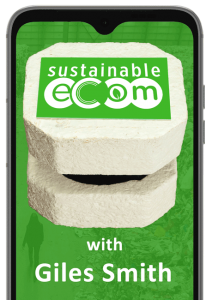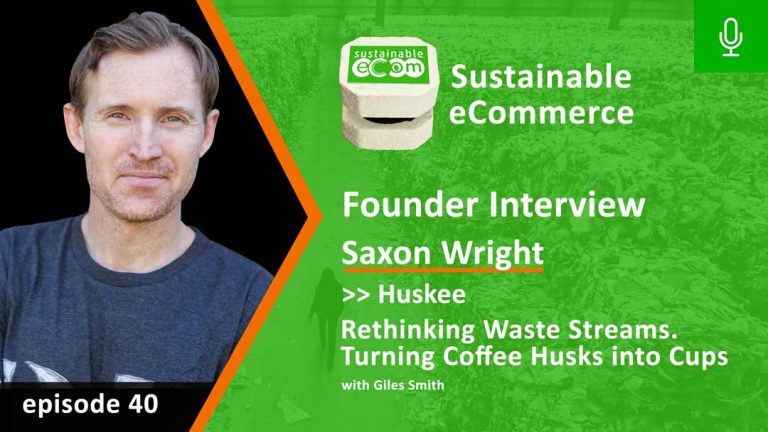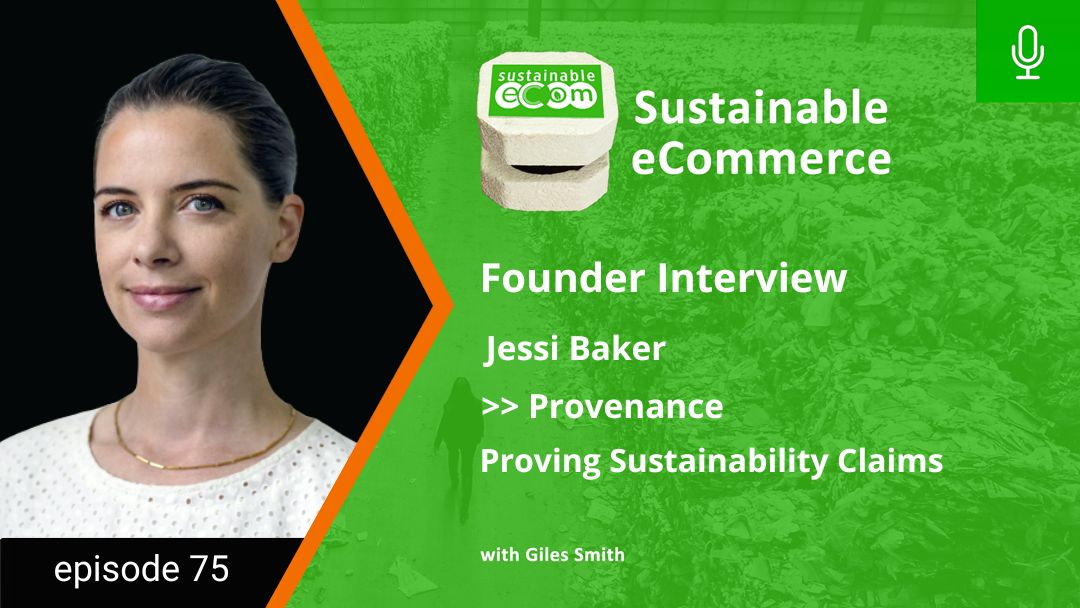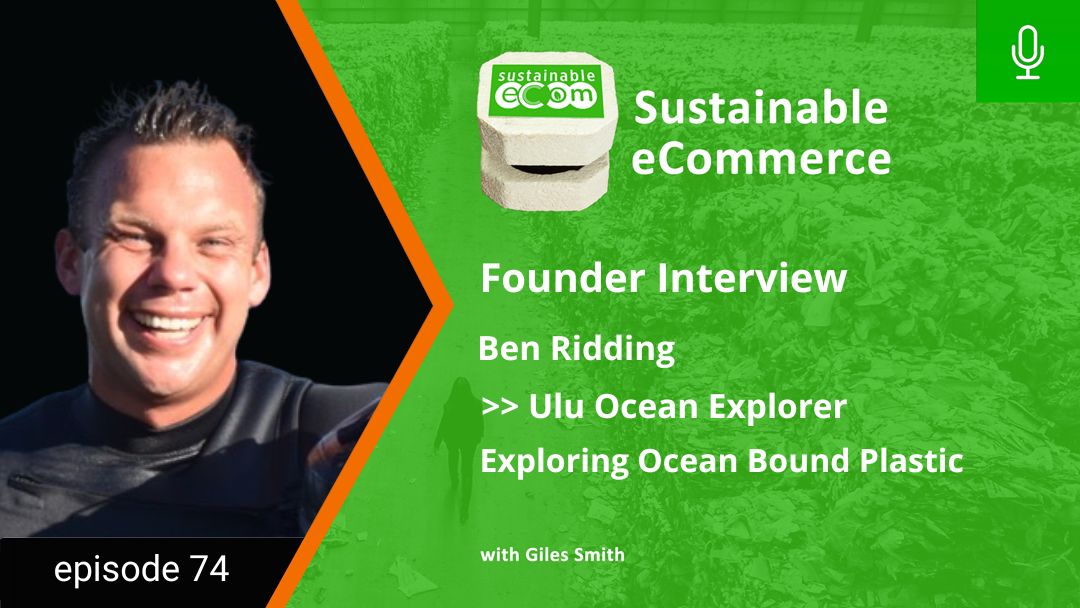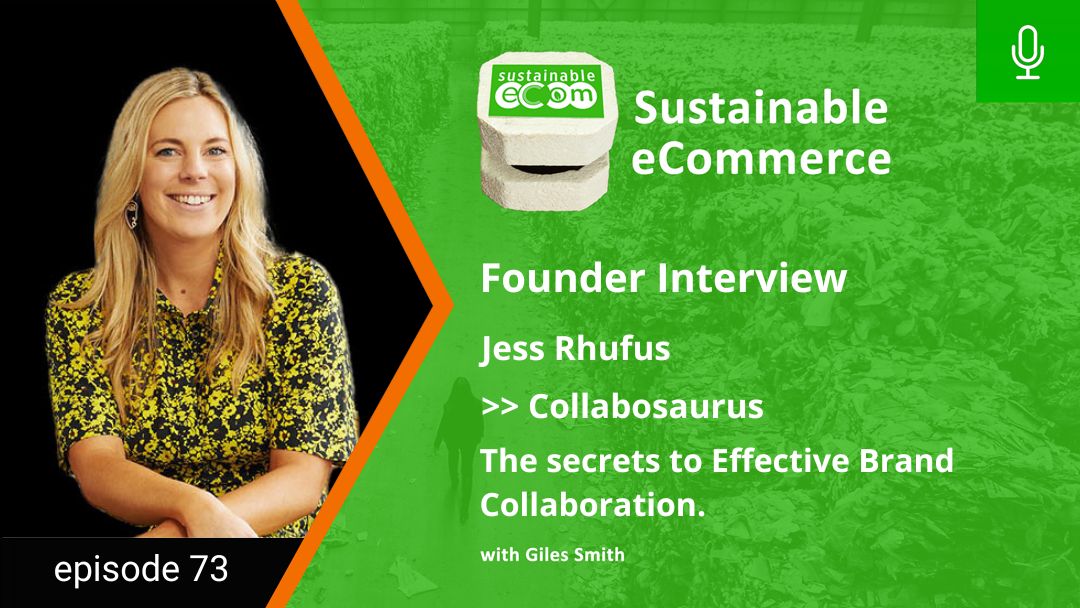Hello & Welcome to EP40 of the Sustainable Ecommerce Podcast!
In today’s show I get to chat with Saxon Wright, founder of a product that I use almost every day – the reusable Huskee Coffee Cup. Now, as we head into 2023 there are heaps of reusable cup brands all aiming to make a dent in billions of disposable cups that end up in landfill or floating around the place every year, and by and large they all follow the model laid down by KeepCup all those years ago.
But Huskee are a little different. Firstly, they’re the only brand I know at least that are tacking not just the disposable cup problem, but the vast piles of organic waste created by the coffee industry, in their case by turning the waste stream of discarded coffee husks into a value stream for the farmers by actually including the husk material in their injection moulding process.
But while you can purchase their cups as a retail customer as I have, their primary focus is on providing them as a reusable alternative for cafes and restaurants, thus tackling the issue at scale.
Saxon takes us on a fascinating behind the scenes look at how Huskee came about, some of the many challenges they faced in bringing this remarkable product to market, and where their focus is as we head into 2023.
Introducing Saxon Wright and Huskee
Saxon Wright has deep experience in the coffee space, having operated a number of cafes, founded sustainable coffee brand Pablo & Rusty’s and now Huskee, a leading Australian brand of reusable coffee cups serving both the cafe and retail industries.
Through experience of all parts of the coffee supply chain, Saxon spotted a number of sustainability issues, most notably the huge quantity of waste related to disposable coffee cups and the volume or organic waste produced through coffee bean harvesting. Huskee was born when Saxon discovered a way to use coffee husks in the production of reusable coffee cups, thus providing a solution to both problems.
What is the environmental impact of disposable coffee cups?
According to Huskee’s data, Australians consume more than 50,000 cups of coffee every half an hour!

The unfortunate reality is that only 0.3% of coffee cups are currently recyclable. Many of the cups being marketed as ‘eco friendly’ of ‘composable’ in fact still contain plastic lining which means that they can’t be effectively recycled.
Perhaps even more worrying for your health, there is increasing evidence that the plastic lining of disposable coffee cups breaks down in hot water, resulting in microplastics being released into your body as well as the environment!
Most compostable cups also require industrial composting facilities to be broken down effectively. The result is that up to 60,000 kilos of coffee cup waste end up in landfill each year in Australia alone!
To put it into perspective, 16 billion paper cups are used for coffee every single year which means, 6.5 million trees are cut down to make cups.The production of this uses 4 billion gallons of water going to waste and this generates enough energy to power 54,000 homes for a year also goes to waste.
It is estimated that the production of four paper cups results in one pound of CO2 emissions. Almost all paper cups end up in landfill which release a more harmful gas called methane that traps heat in the atmosphere contributing to global warming.
With this huge sustainability issue in mind, Saxon wanted to develop a coffee-cup reuse solution that had the potential to reduce waste in other areas of the coffee supply chain.
What are coffee husks & how can this waste material be reused?
Coffee beans are made by extracting & roasting the seeds of the Coffee plant. Prior to roasting, the seeds need to be extracted from the coffee fruit, leaving behind a fibrous coating called the husk.
Over 10 million tons of coffee are produced annually around the world, yet more than 90% of that production is wasted, including the husk.
Since 1kg of coffee husks are created for every kg of coffee beans produced, coffee husks are the main solid residues from handling and processing coffee.
While husks can be composted, the reality is the majority of this waste is simply discarded into landfill, attracting pests and creating methane & CO2 emissions as it decomposes. Most coffee farmers are required to cover the cost of disposal, including transportation and landfill fees.
However, being a fibrous material, husks have several properties that make them an interesting material for use in coffee cups, including thermal insulation & durability.
The big challenge facing Saxon and the Huskee team was how could these husks be leveraged at scale as a base material for reusable cups?
How is coffee husk waste used to make Huskee coffee cups?
Huskee’s solution is to combine powdered coffee husks with other bio-resins to form the final cups.
The process certainly isn’t easy, and according to Saxon, took several years to perfect.
The first problem Huskee encountered was how to collect & store the husk materials. Transporting such a huge volume of material from the farms to the cup factory proved very costly. To solve this, the team worked out an approach to milling it on site into a fine powder prior to being shipped to the cup factory.
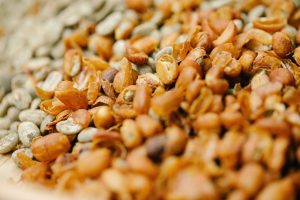
Coffee farmers were not set up for this milling work, and the Huskee team had to work with specialist partners who could set up machinery and teams on site to get the husk material ready to be sent to the factory.
The team also needed to work through material science to find the right blend of husk material and other bio-resins to inject into the final cup moulds. Saxon understood that to be scalable, Huskee would need to use existing machinery to produce their cups, which meant that the final blended resin needed to have similar properties to existing plastics.
With all these challenges squared away, the team needed to consider what would happen to the cups at the end of their useful life.
Can Huskee cups be recycled?
Even though the cups are made from bio-resin and organic husks, the reality is the cups are built for durability which makes them very hard if not impossible to compost.
But, with a keen focus on supporting the cafe industry, managing broken and disused cups had to be considered during the design process as well. The team also knew that to be recyclable anywhere in the world, the finished product would need to be recyclable using the infrastructure and machinery that already exists within the plastic recycling industry.
Working with partners around the world, Huskee have created the Huskee Loop system which collects back old or damaged cups and uses standard machinery to shred the cups into recycled resin which can then be used with existing injection molding machines to make new products.
The Huskee dog bowl made from 100% recycled Huskee cups is one of the first products to emerge from this, with many more to come soon.
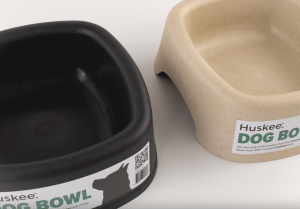
Taking the approach of using local partners helped Huskee reduce the carbon footprint and costs of transporting the disused cups as providing the most direct supply chain for reusing the raw materials.
One of the most labour intensive and therefore costly components of plastic recycling is the need to separate the recovered plastics into both different polymer streams and different colours. For that reason, all Huskee products are made from the same polymer / resin mix and are only available in 2 colours, making the sorting of returned items simple and effective in any facility.
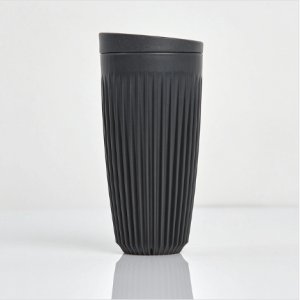
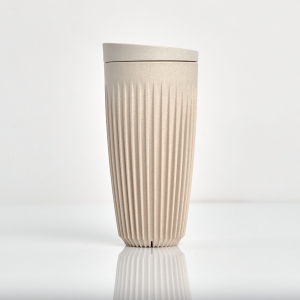
There are many reusable coffee cups brands. What makes Huskee so different?
While other brands focus primarily on the retail market, Huskee looks at the problem more holistically and seeks to support the cafe industry at scale.
While reusable coffee cups are always better than disposable, they can pose operational problems for busy coffee bars. For example, the size variation between brands can make it hard for the barista to make the right amount, resulting in inconsistent fill or wasted coffee and milk. Huskee solves this by offering standard sizes (in fluid ounces) almost universally used in the industry.
In addition, customers presenting poorly washed cups can present hygiene issues, which is again solved by Huskee’s Swap system. The customers return their cups to be washed by the cafe, and are given a different cup from the in-house stock with their next order.
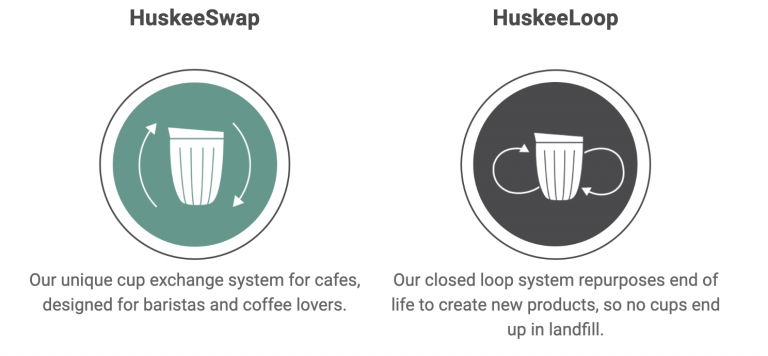
Scaling Huskee into an international brand
Huskee originally launched on Kickstarter in 2018. Aside from raising capital, the success of their initial campaign proved there was significant interest from all over the world.
Four years on, and Saxon perceives the brand to be at a critical stage in expanding their impact. Accordingly their focus is in a number of key areas.
Scaling up the Huskee Swap network is a key growth lever. They already have solid participation in Australia, but are working with key venues both here and overseas to raise awareness and multiply their impact. They are actively working with partners and distributors in over 80 countries! A key part of the Swap system is the Huskee Swap app, which they are putting significant investment into currently.
Scaling out the Huskee Loop system is also a critical strategy to ensure they continue to deliver on their organisational values in every geography. The goal is to work with local manufacturers all over the world to find smaller, bespoke moulding companies that can take the products, grind it down to make new products. In addition they are also exploring other recyclable materials including glass to expand their range of functional coffeeware.
Where can people get Huskee products?
If you’re ready to join the Huskee revolution, ask your local cafe! If they don’t have it, and you wish to learn more or purchase your own, visit the website, huskee.co
Top Takeouts
Aside from the obvious issues around coffee cups going into landfill, it was eye opening to hear that even truly compostable cups rarely end up in compost, and still have a significant impact in terms of carbon footprint in shipping, not to mention the forestry impact of the trees used to create the wood pulp.
Reusable is clearly better – but Saxon’s perspective from the point of view of the coffee bar trying to service every make and model of different cup was an interesting one, and you can see how standardisation is going to help with efficiency and cafeteria waste.
Saxon is setting a great example with rethinking and extracting new value from what has traditionally been regarded as a waste stream. Coffee husks are produced in huge quantities, and either left to rot or transported to be burned or dumped into landfill on a commercial scale, all of which add to GHG emissions. But by uncovering useful properties of husks, like their robustness and thermal insulation, Saxon’s team have been able to turn waste into useful raw material, and not only reduce landfill, reduce GHG but also provide a value stream for the coffee farmers.
Are there waste streams in your supply chain that you could access and find new uses for?
And finally I really loved hearing how the Huskee team are approaching product stewardship, specifically what happens to their products at end of life. All products have and end of life, and increasingly consumers as well as legislators are expecting brands to take responsibility for what happens to that product once the customer has finished with it.
With international participation in mind, Saxon knew that not only would they need to be able to collect up those disused products in an efficient way but actually make use of the collected material by recycling and creating new products using the local infrastructure in each case. The kind of capability is only possible with careful thought and planning at the product design stage, especially when you’re using unusual materials like in Huskee’s case, but equally where your product is comprised of a mix of different materials.
If you’re planning on releasing new products through 2023 and beyond, now is a great time consider end of life processing, because it’s only going to become more important and more expected moving forward.
With governments around the world clamping down on single use plastics, including coffee cups, I think Huskee is incredibly well placed to see an explosion of growth as hospitality outlets look for reusable solutions, so they are definitely a brand to watch!
I’ll be back again next week with more stories from the world of Sustainable Ecommerce, so until then, keep building your brand for a healthier planet!





